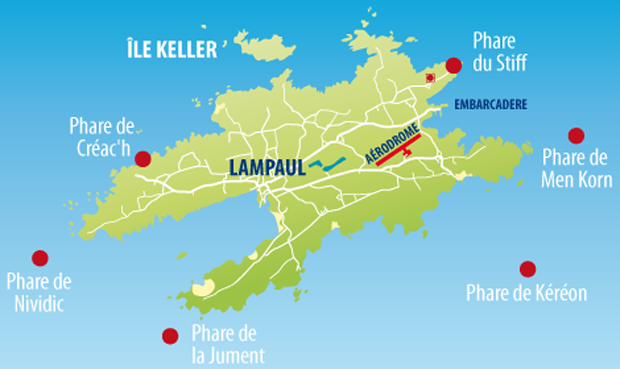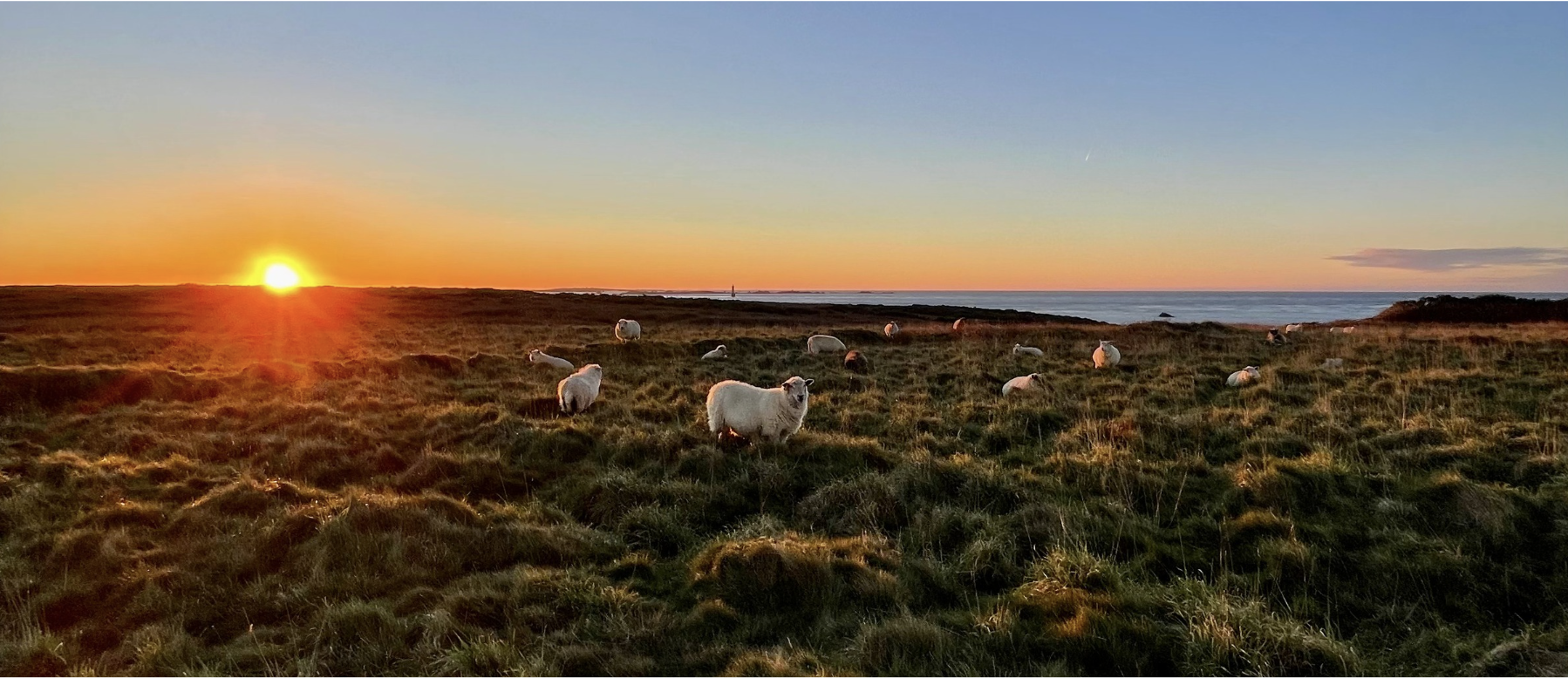
Ouessant's unique geographical location makes it the most westerly point of mainland France and traditionally marks the southern entrance to the Manche. This makes Ouessant one of the most closely watched sites in the world, with its 5 lighthouses.
Its wild and grandiose landscapes of great beauty appeal to all walkers and hikers, as it is a world apart, closer to the world of the ocean than that of man.
An island with a rich heritage
A TRADITIONAL POPULATION
The sedentary population of Ouessant, made up almost exclusively of women, children and the elderly, farmed and raised livestock (rye and barley, horses, cows and, above all, free-range sheep), while the men worked as sailors. Many of them joined the Royal Navy under the Ancien Régime and left on long missions. Some of them never returned. The women therefore remained the real heads of the family.
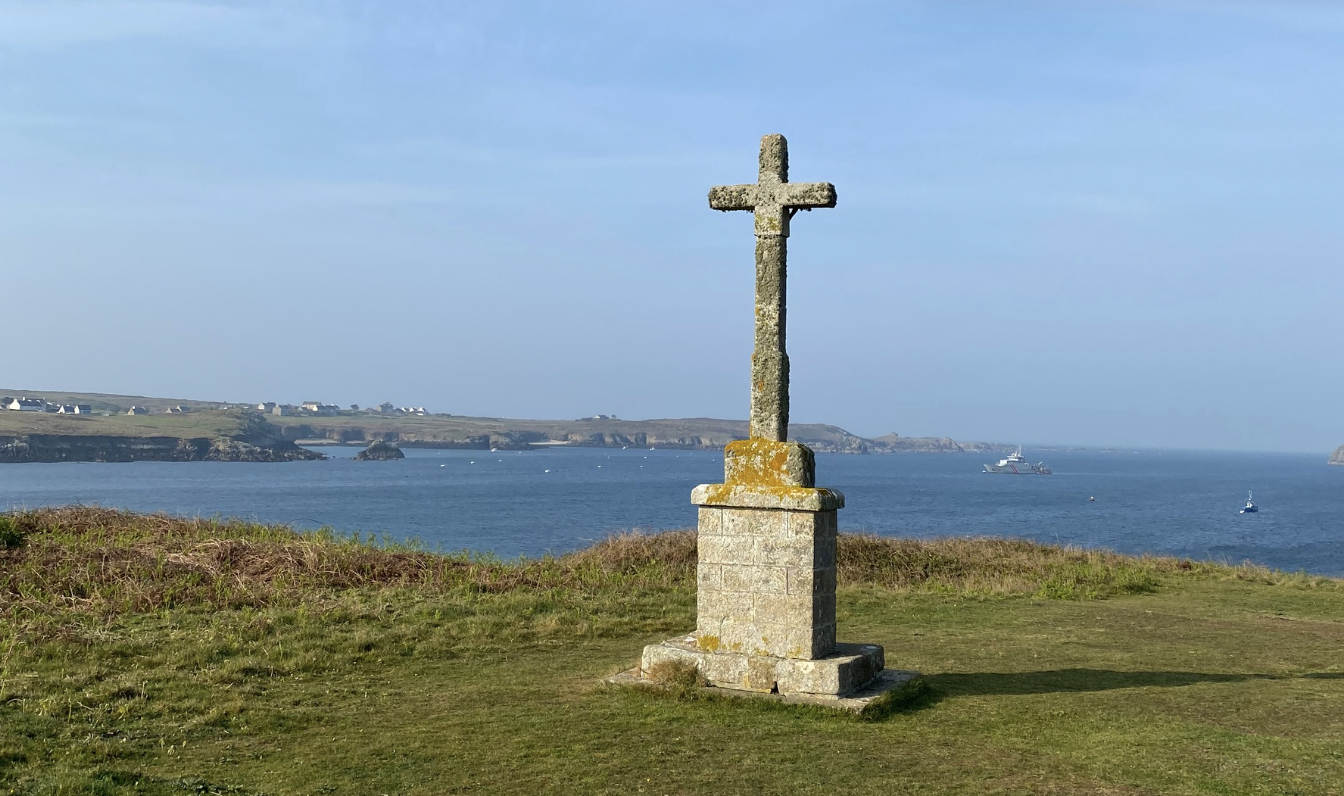
RELIGIOUS HERITAGE
Ouessant has a rich religious heritage. There is a church, two chapels and numerous crosses along the route of processions. The oldest cross is that of Saint-Paul (1704), which overlooks the Penn Arlan headland opposite the Molène archipelago. In the cemetery, near the church of Saint-Pol Aurélien, stands the Proella monument, a constant reminder of the heavy toll paid to the sea by the people of Ouessant. Religious festivals are celebrated in the traditional way, such as the Assumption mass every 15 August, facing Lampaul bay, followed by the blessing of the sea.
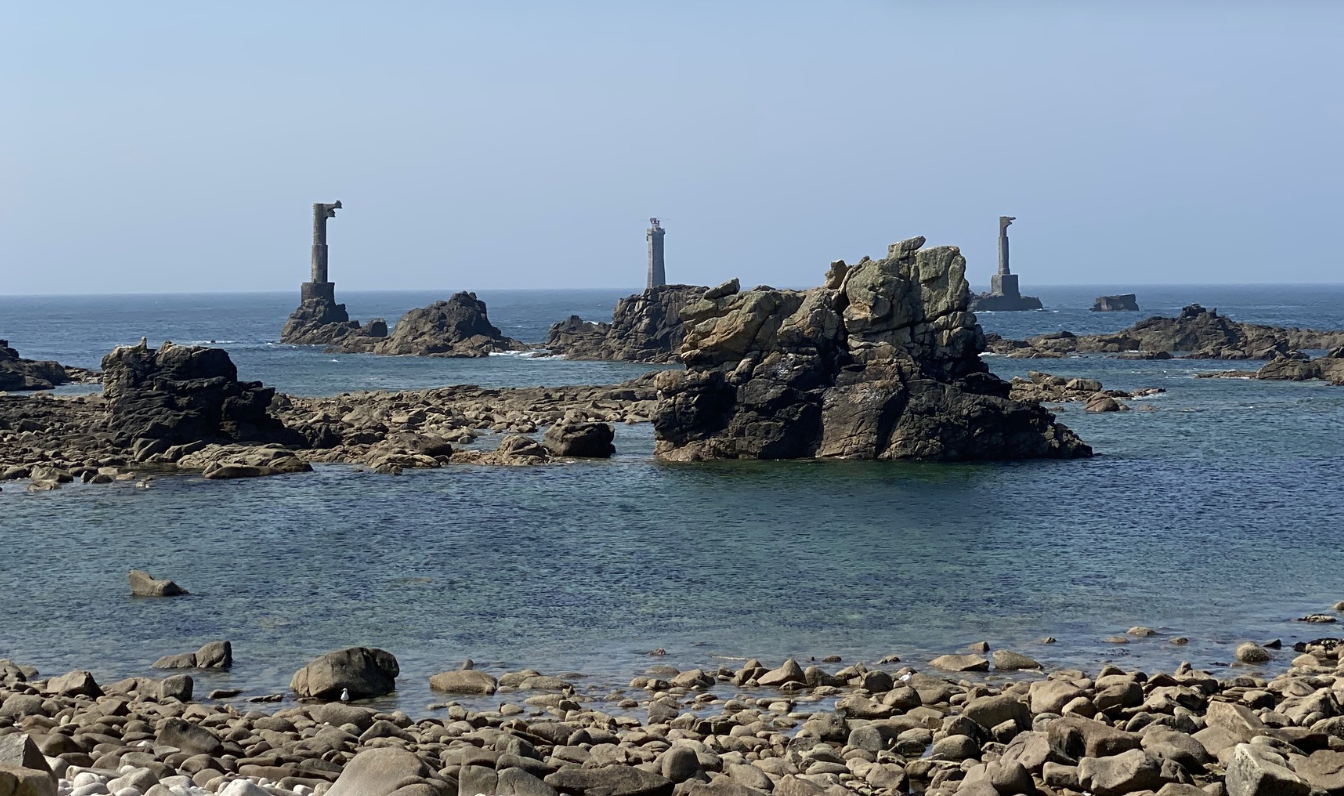
MARITIME HERITAGE
From the cliffs, moors and coastal grasslands of Ouessant Island, you can admire the 5 lighthouses that line the island:
- The Créac'h lighthouse (with its black and white stripes, built in 1863), the 2nd most powerful lighthouse in the world (35m range), guides ships through the Ouessant channel and signals the entrance to the Manche. It houses a lighthouse and beacon museum at its foot.
- The Stiff lighthouse, built under Vauban (1695), overlooks the island at its highest point.
- Nividic lighthouse, built in 1912
- The Jument lighthouse (1904), off the tip of Porz Doun, is classified as an inferno.
- The Kéréon lighthouse (1907), built on the Men Tensel rock, was the last monumental lighthouse to be erected at sea (with its marquetry floors, valuable furniture, etc.).
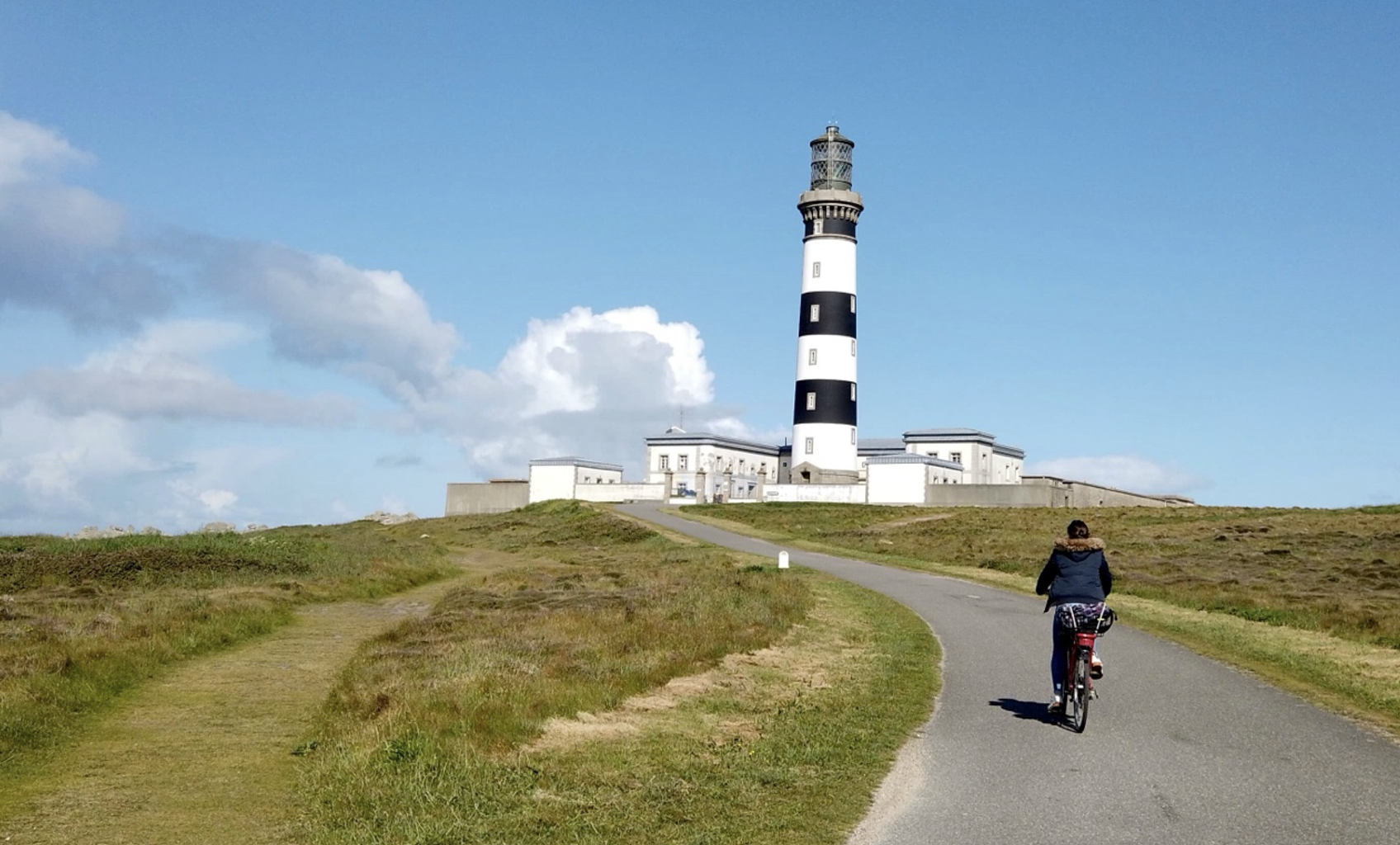
MUSEUMS
Ouessant has 2 museums:
- The Niou-Huella Ecomuseum, which presents the traditions of Ouessant.
- The Lighthouses and Balises Museum, located at the Créac'h lighthouse, which traces the technological development of maritime signalling and presents the history of lighthouse construction.
Every August since 1999, the island has hosted the Salon du Livre Insulaire (Island Book Fair).
Useful information about Ouessant
Find all the information you need for your stay in Ouessant:
Bike rental:
- Cyclevasion (Phone: +33 2.98.48.85.15) site internet
- La bicyclette (Phone: +33 2.98.48.81.34) site internet
- Ouessancycles (Phone: +33 2.98.48.83.44) site internet
Car rental:
- Garage Kerebel (Phone: +33 2.98.48.81.33 - Email: garage.kerebel@wanadoo.fr)
Taxi and guided tours:
- Compagnie du Taxi Mauve : +33 6.07.90.07.62 or +33 6.07.90.07.43
ACTIVITIES
The island offers a wide range of sporting activities, including sailing, diving, fishing, sailing in an old sailing ship, horse-riding, hiking or cycling (32 km of coastline), pétanque...
For more information on the island (bike hire, hotels, gites and restaurants), click here.
info@finistair.fr



